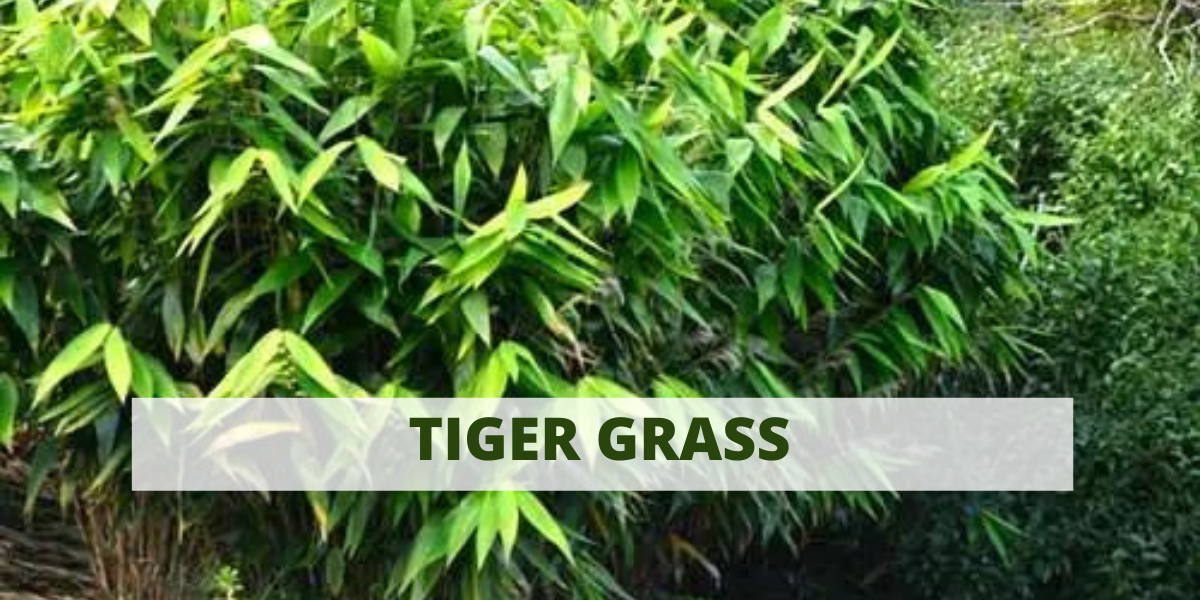Tiger grass, scientifically known as Thysanolaena maxima, is a striking and versatile plant native to Southeast Asia and parts of Australia. With its vibrant green foliage and distinctive appearance, tiger grass has become a popular choice for landscaping and garden enthusiasts worldwide. In this guide, we’ll delve into the fascinating world of tiger grass, exploring its origins, characteristics, cultivation tips, and much more.
Introduction to Tiger Grass
Tiger grass, also commonly referred to as elephant grass or bamboo grass, belongs to the Poaceae family. It is a perennial grass species characterized by its tall, bamboo-like stems and lush foliage. The plant’s name, Thysanolaena maxima, derives from the Greek words “thysanos” (fringe) and “laios” (stone), referring to the fringed edges of its leaves.
Origins and Distribution
Tiger grass is native to tropical and subtropical regions of Asia, including countries like Thailand, Malaysia, Indonesia, and the Philippines. It is also found in northern Australia, particularly in Queensland and the Northern Territory, where it thrives in humid and warm climates. In its natural habitat, tiger grass often grows along riverbanks, in open woodlands, and on disturbed sites.
Characteristics of Tiger Grass
One of the most striking features of tiger grass is its impressive size. It can reach heights of up to 4 meters (13 feet), with thick clumps of stems rising from underground rhizomes. The stems are sturdy and erect, resembling bamboo culms, and are adorned with narrow leaves that can grow up to 60 centimeters (24 inches) in length.
The foliage of tiger grass is a vibrant green color, providing a lush and tropical aesthetic to any landscape. The leaves are linear in shape, with serrated edges that give them a distinctive appearance. In the late summer months, tiger grass produces feathery flower panicles that add to its ornamental value.
Cultivation and Care
Tiger grass is relatively easy to grow and maintain, making it a popular choice for both novice and experienced gardeners. Here are some tips for cultivating and caring for this exotic plant:
- Sunlight: Tiger grass thrives in full sun to partial shade. Ensure that it receives at least 6 hours of sunlight per day for optimal growth.
- Soil: This grass prefers well-draining, fertile soil with a slightly acidic to neutral pH. Amend heavy clay soils with organic matter to improve drainage.
- Watering: Keep the soil consistently moist, especially during the plant’s establishment phase. However, avoid waterlogging, as excessive moisture can lead to root rot.
- Fertilization: Apply a balanced fertilizer during the growing season to promote healthy growth and vigor. Avoid high-nitrogen fertilizers, as they may encourage excessive foliage growth at the expense of flowering.
- Pruning: Trim back dead or damaged foliage as needed to maintain the plant’s appearance and health. You can also cut back the stems in late winter to encourage new growth in the spring.
- Propagation: Tiger grass can be propagated from seeds or division. Collect seeds from mature flower panicles and sow them in well-prepared soil. Alternatively, divide established clumps in early spring to create new plants.
- Pest and Disease Control: Tiger grass is relatively resistant to pests and diseases. However, occasional infestations of aphids, scale insects, or fungal leaf spots may occur. Monitor the plant regularly and treat any issues promptly with appropriate insecticides or fungicides.
Landscaping and Design Ideas
Tiger grass adds a touch of exotic beauty to any landscape, whether used as a focal point, a backdrop for other plants, or as a privacy screen. Here are some creative landscaping ideas incorporating tiger grass:
- Tropical Oasis: Create a lush tropical garden by planting tiger grass alongside other tropical species like palms, ferns, and flowering vines. Add decorative elements like boulders, water features, and wooden accents to enhance the ambiance.
- Asian-inspired Garden: Design a serene Asian-inspired garden featuring tiger grass as a prominent feature. Combine it with bamboo, Japanese maples, and ornamental grasses to evoke a tranquil and Zen-like atmosphere.
- Privacy Screen: Use tiger grass to create a natural privacy screen or windbreak along property boundaries. Plant it in rows or clusters to form a dense barrier that provides both visual screening and noise reduction.
- Container Gardening: Cultivate tiger grass in large containers or decorative pots to add vertical interest to patios, decks, or balconies. Pair it with colorful annuals or trailing vines for a striking contrast.
Conclusion
Tiger grass, with its bold appearance and tropical charm, is a versatile plant that adds beauty and interest to any garden or landscape. Whether grown as a standalone specimen or incorporated into elaborate garden designs, this resilient grass species never fails to impress. By following proper cultivation and care guidelines, you can enjoy the stunning foliage and graceful elegance of tiger grass in your outdoor space for years to come.



